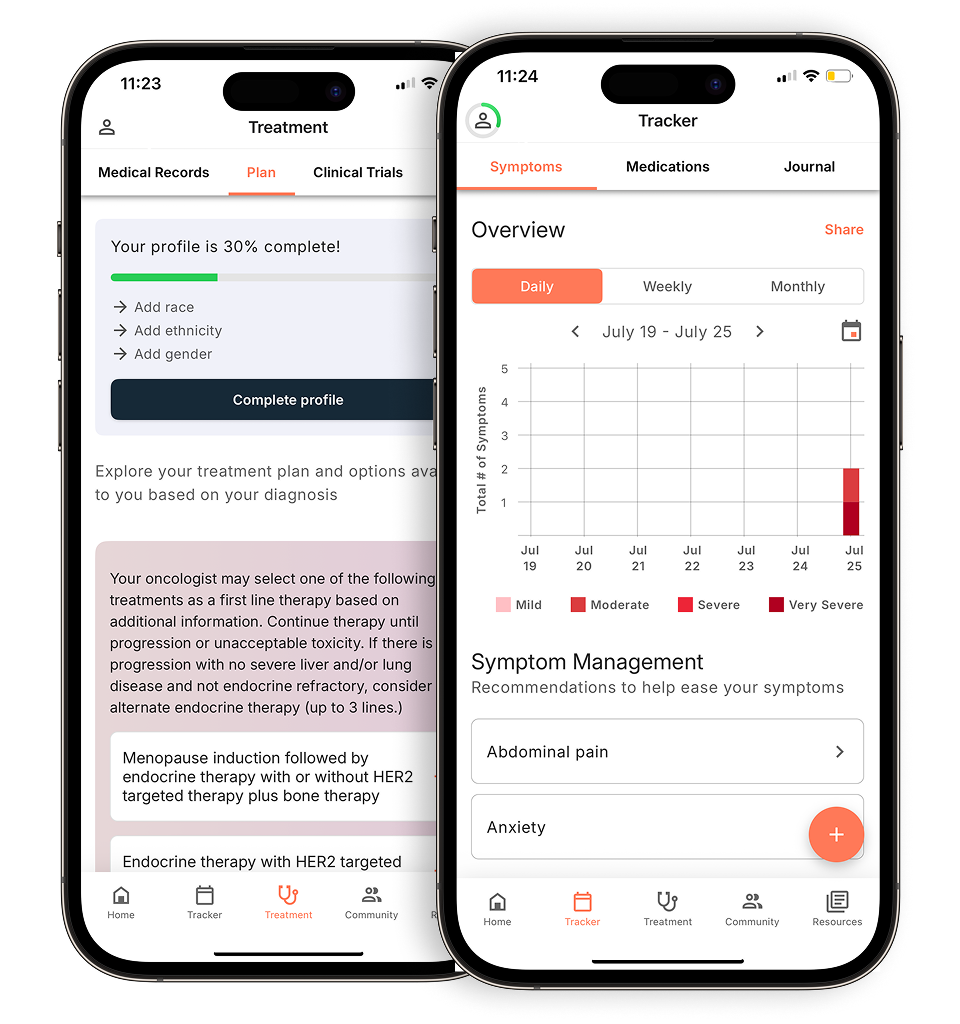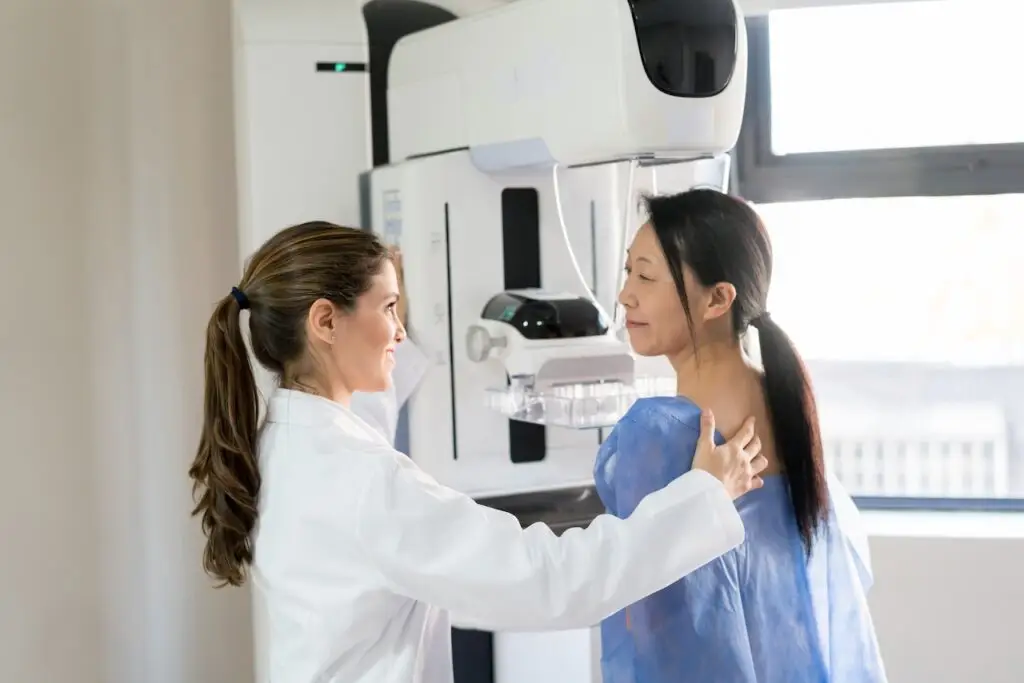Signs and symptoms of metastatic breast cancer
Metastatic breast cancer, also known as stage 4 breast cancer, occurs when cancer cells spread beyond the breast and nearby lymph nodes to distant organs such as the bones, lungs, liver, or brain. Recognizing the early warning signs of metastatic breast cancer is critical, as prompt medical attention can improve quality of life and expand treatment options.
While many symptoms may overlap with other health conditions, understanding what to watch for can help you seek care sooner. Below are some of the most common signs and symptoms, along with information about why they occur and what steps to take if you experience them.
Unexplained Bone Pain
Bone pain is one of the most frequent symptoms of metastatic breast cancer. This occurs because cancer cells often spread to the bones, weakening them and causing discomfort.
- What it feels like: A deep, aching pain that doesn’t go away with rest or common pain relievers.
- Common locations: Spine, ribs, pelvis, hips, arms, and legs.
- Other clues: Swelling, fractures that occur more easily than expected, or stiffness.
If bone pain persists for more than a few days or worsens over time, consult your doctor. Imaging tests such as bone scans, MRIs, or X-rays may be used to check for metastasis.
Shortness of Breath and Chest Symptoms
When breast cancer spreads to the lungs, it can interfere with breathing.
- Shortness of breath may appear even during light activity, such as climbing stairs.
- Persistent chest pain or discomfort can occur if fluid builds up around the lungs (pleural effusion).
- Coughing or wheezing may develop as cancer affects lung tissue.
Because shortness of breath can also be caused by infections, asthma, or heart issues, it’s important not to ignore this symptom—especially if you have a history of breast cancer.
Persistent or Unusual Cough
A cough that lingers for weeks and doesn’t improve with medication may be another sign of lung involvement.
Evidence-based guidance powered by NCCN Guidelines®
Personalized treatment plans shaped by the latest oncology standards—tailored to your diagnosis.
Get started
View your personalized treatment plan in the Outcomes4Me app
Use your diagnosis to unlock personalized NCCN Guidelines®-aligned recommendations.
Continue in app
- Warning signs: Coughing up blood-tinged sputum, worsening at night, or coughing without other cold or flu symptoms.
- Why it matters: Metastasis to the lungs is common in advanced breast cancer, and a persistent cough can be one of the first signs.
Swelling or Pain in the Liver Area
The liver is another organ frequently affected by metastatic breast cancer.
- Symptoms include: Pain or swelling in the upper right side of the abdomen, fullness, loss of appetite, or nausea.
- Visible signs: Jaundice (yellowing of the skin or eyes) or unexplained bloating.
- Why it matters: Liver involvement may not cause noticeable symptoms early, so reporting subtle changes is important.
Neurological Symptoms (Brain Metastases)
If cancer spreads to the brain, neurological symptoms may appear. These can vary depending on which part of the brain is affected.
- Common signs: Headaches, vision changes, dizziness, seizures, weakness on one side of the body, difficulty speaking, or memory problems.
- Subtle changes: Personality shifts, confusion, or problems with balance and coordination.
Seek immediate medical attention if you experience sudden neurological symptoms, as they may require urgent treatment.
Weight Loss and Fatigue
Unexplained weight loss and constant fatigue are hallmark symptoms of many cancers, including metastatic breast cancer.
- Fatigue: A deep tiredness that does not improve with rest.
- Weight loss: Losing weight without dieting or changes in exercise habits.
- Related issues: Loss of appetite, anemia, or changes in metabolism caused by cancer.
While stress or other illnesses can also cause fatigue and weight loss, it’s best to discuss persistent symptoms with your healthcare provider.
Changes in Bowel or Bladder Habits
Metastatic breast cancer can spread to the pelvic area or abdomen, leading to digestive and urinary changes.
- Symptoms to watch for: Constipation, diarrhea, blood in the stool or urine, increased frequency of urination, or feeling of incomplete emptying.
- Why it matters: Although these symptoms are common in many non-cancerous conditions, new or worsening changes should be evaluated.
Other Potential Early Signs to Watch For
In addition to the symptoms above, some people may notice:
Cancer care guidance for every step of your journey
Get treatment options, clinical trials, and support tailored to your diagnosis--all in one place.
Get started
See treatment options, manage symptoms, and stay informed—all in the app
View treatment options and trials personalized to your diagnosis—plus track progress in real time.
Continue in app
- Swelling in the arms or legs (lymphedema)
- Frequent infections due to a weakened immune system
- Skin or breast changes near the original cancer site
How Is Metastatic Breast Cancer Diagnosed?
If symptoms suggest metastasis, your doctor may recommend:
- Imaging tests: X-rays, CT scans, MRI, bone scans, or PET scans.
- Blood tests: To evaluate liver function, calcium levels, or tumor markers.
- Biopsy: In some cases, a sample from the affected area is needed for confirmation.
Early detection allows treatment to start sooner, which may help control symptoms and slow progression.
When to Contact Your Doctor
You should seek medical advice if you experience:
- New, persistent pain (especially in bones or abdomen)
- Neurological changes such as sudden headaches, confusion, or vision problems
- Unexplained cough, shortness of breath, or chest pain
- Rapid weight loss or overwhelming fatigue
Even if symptoms turn out to be unrelated to cancer, early evaluation provides peace of mind and ensures other conditions are managed promptly.
Conclusion
Being aware of the early warning signs of metastatic breast cancer can make a meaningful difference in your care. While not every symptom points to cancer, listening to your body and communicating with your healthcare provider is key.
Regular follow-ups, imaging when needed, and self-advocacy help ensure that any progression is caught early. Remember: the sooner metastatic breast cancer is identified, the more options you and your care team will have to manage it effectively.
Outcomes4Me provides FDA-approved treatment guidance for breast cancer including Stage I through to metastatic diagnoses. If you would like detailed information on your treatment options, download the Outcomes4Me App.
FAQ's
What is the first red flag of metastatic breast cancer?
The first symptoms can vary from person-to-person, but the most common early warning signs are:
- Skin changes, such as redness, swelling, or other visible changes in one or both breasts
- An increase in size or change in shape of the breast or breasts
- Nipple discharge other than breast milk
- Changes in the appearance of one or both nipples
- General pain in or on any part of the breast(s)
- Lumps or nodes felt on or inside of the breast
What are the most common sites of breast cancer metastasis?
Breast cancer most often spreads to the bone, followed by the lungs, liver, and brain. Lymph nodes—especially near the armpit and collarbone—are typically the first area affected before the cancer moves to distant organs.
How do you detect early breast cancer metastasis?
Early metastatic breast cancer is usually detected through imaging tests—such as CT scans, MRIs, bone scans, or PET scans—performed when symptoms arise or during routine follow-ups. Blood tests (e.g., liver function panels) and biopsies may also be used to confirm if cancer has spread.
What can be mistaken for metastatic breast cancer?
Symptoms like fatigue, weight loss, bone pain, or shortness of breath may mimic other conditions such as arthritis, lung infections, anemia, or benign digestive issues, potentially leading to misdiagnosis. Persistent or unexplained symptoms should prompt further evaluation to rule out metastasis.
How would I feel if I had metastatic cancer?
Feelings can vary widely, but common experiences include persistent fatigue, unexplained weight loss, and symptoms depending on where cancer has spread—such as bone pain, cough, jaundice, or neurological changes like headaches or confusion.
How long can you have metastatic cancer without knowing?
Metastatic breast cancer can sometimes remain undetected for weeks or even months, particularly when early symptoms are mild or resemble other illnesses. Many patients are diagnosed only when symptoms become more pronounced or during routine imaging follow-ups.
Where is the first place breast cancer usually spreads?
The initial spread of breast cancer most commonly occurs in nearby lymph nodes, especially under the armpit (axilla) and near the collarbone. After lymph node involvement, distant spread often follows to bones, lungs, liver, or brain.
Personalized support for real care decisions
Understand your diagnosis, explore clinical trials, and track symptoms--all in one place.
Get started
Compare treatments, prepare for appointments, and track side effects—all in the app
Built for your diagnosis, Outcomes4Me gives you the tools to make confident, informed decisions—right when you need them.
Continue in app






